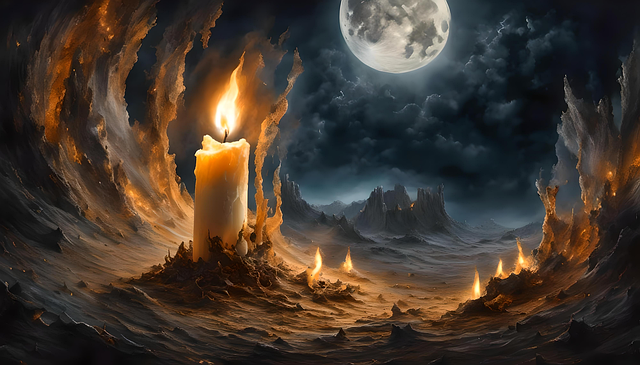The art world is constantly evolving, and one of the most captivating trends today is the fusion of hyperrealism and fantasy. Hyperrealism captures life in astonishing detail, while fantasy unleashes imagination beyond reality. Together, they create artwork that is breathtaking, immersive, and emotionally resonant.
Whether you are a professional artist, a digital creator, or simply an enthusiast, exploring this combination allows you to push creative boundaries and produce art that leaves viewers awe-inspired.
Understanding Hyperrealism Meets Fantasy
Hyperrealism is a genre that emphasises extreme detail, precision, and realism, often making paintings or digital works look more lifelike than photographs. It requires immense skill and patience to capture textures, lighting, and subtle nuances of reality.
When combined with fantasy elements, hyperrealistic art transforms into something magical. Imagine a dragon rendered with lifelike scales and shadows, or a mystical forest so detailed it feels tangible. This blend engages the imagination while grounding it in reality, making the art unforgettable.
Key Techniques for Creating Hyperrealism Fantasy Art
To create stunning works where hyperrealism meets fantasy, consider the following techniques:
- Focus on Lighting and Shadows: Perfect lighting enhances realism and adds depth to fantastical elements.
- Layering Details: Start with a base of hyperrealistic textures, then layer fantasy motifs like magical creatures or surreal landscapes.
- Experiment with Colour Palettes: Combine natural, earthy tones with vibrant, otherworldly colours to balance realism and fantasy.
- Use Reference Material: Study real-life textures, anatomy, and environments to inform your fantasy creations.
- Leverage Digital Tools: Software like Photoshop, Procreate, and AI art generators can speed up iterations while maintaining precision.
By combining these methods, your artwork will be both believable and imaginative, captivating viewers with detail and wonder.
Practical Tips for Artists
Creating hyperrealism-fantasy art is challenging but deeply rewarding. Here are some practical tips:
- Start Small: Focus on a single subject or scene before tackling large compositions.
- Iterate Often: Use multiple drafts or AI-assisted ideas to refine details and composition.
- Balance Realism and Fantasy: Avoid overloading the piece with too many fantastical elements; let realism anchor the viewer.
- Tell a Story: Hyperrealistic fantasy art resonates when it evokes emotion or tells a narrative.
These approaches ensure your work is technically strong, emotionally engaging, and visually stunning.
Applications in Digital Art and Media
Hyperrealism meets fantasy isn’t limited to traditional painting. It has a growing impact in:
- Digital Illustration and Concept Art: For films, video games, and animations, where immersive worlds are essential.
- Advertising and Marketing: Hyperrealistic fantasy visuals capture attention and spark imagination.
- Virtual and Augmented Reality: Realistic textures combined with fantastical environments create memorable experiences.
Artists exploring this trend now are shaping the future of visual storytelling, merging technical mastery with limitless creativity.
Challenges and How to Overcome Them
Artists may face challenges when blending hyperrealism and fantasy:
- Overcomplication: Too many fantasy elements can overwhelm realism. Solution: maintain focus and hierarchy in design.
- Time-Intensive Detailing: Hyperrealism requires patience. Solution: break projects into stages and use digital tools for efficiency.
- Maintaining Emotional Impact: Detailed realism may feel cold. Solution: infuse narrative, mood, and character emotion.
With practice and strategic planning, these obstacles become opportunities to refine your style and creativity.
The Future of Hyperrealism and Fantasy Art
As technology advances, hyperrealistic fantasy art will continue to grow. AI-assisted tools, 3modellingng, and immersive media platforms will allow artists to experiment and create more intricate, lifelike, and imaginative works. Artists who embrace this combination now will be pioneers, defining the next era of digital and traditional visual storytelling.
FAQs
1. What is hyperrealism in art?
Hyperrealism is an art style that emphasises extreme detail and realism, often making works appear lifelike, more than a photograph.
2. How does fantasy integrate with hyperrealism?
Fantasy adds imaginative elements such as mystical creatures, surreal landscapes, or magical objects to hyperrealistic art, creating immersive experiences.
3. Which tools are best for hyperrealism fantasy art?
Digital tools like Photoshop, Procreate, and AI art generators help refine details and combine realism with fantasy efficiently.
4. Do I need advanced skills to start?
While basic skills help, digital tools and iterative practice allow beginners to explore and grow in hyperrealistic fantasy art.
5. How can hyperrealism-fantasy art be used professionally?
It’s widely used in concept art, digital illustration, film, video games, advertising, and immersive experiences like VR and AR.
